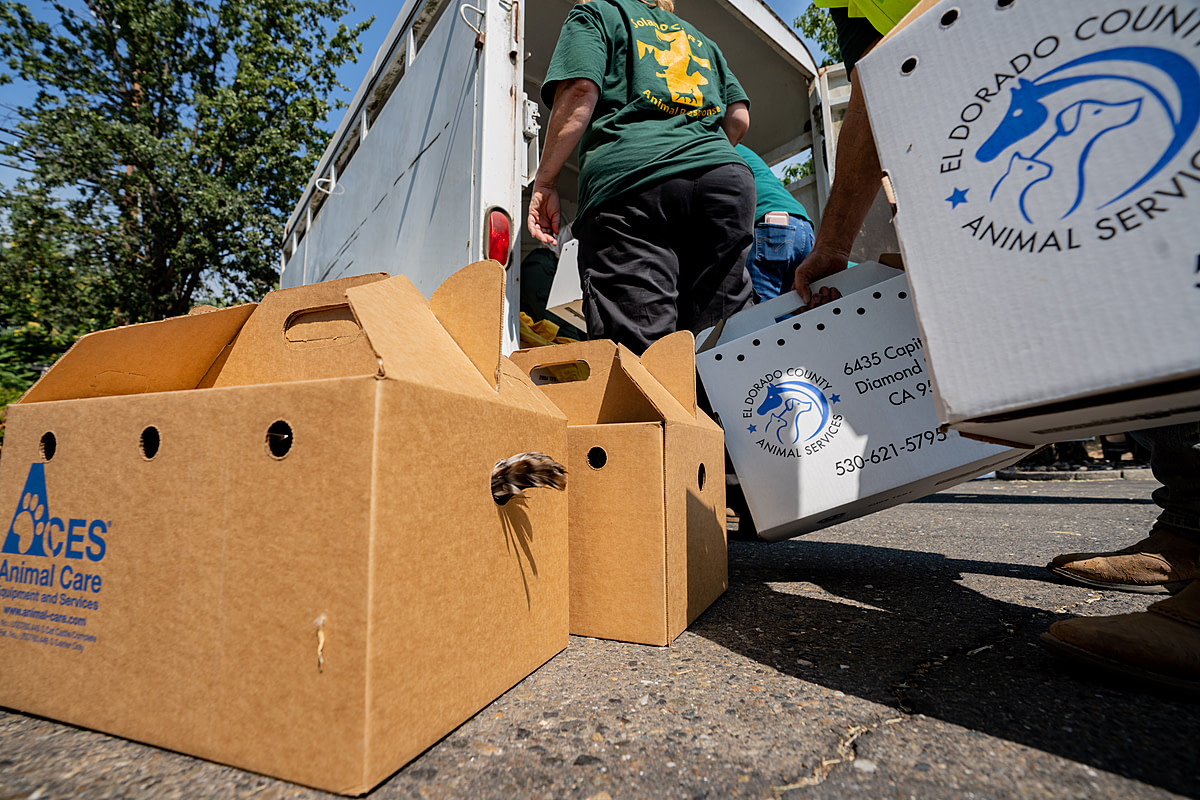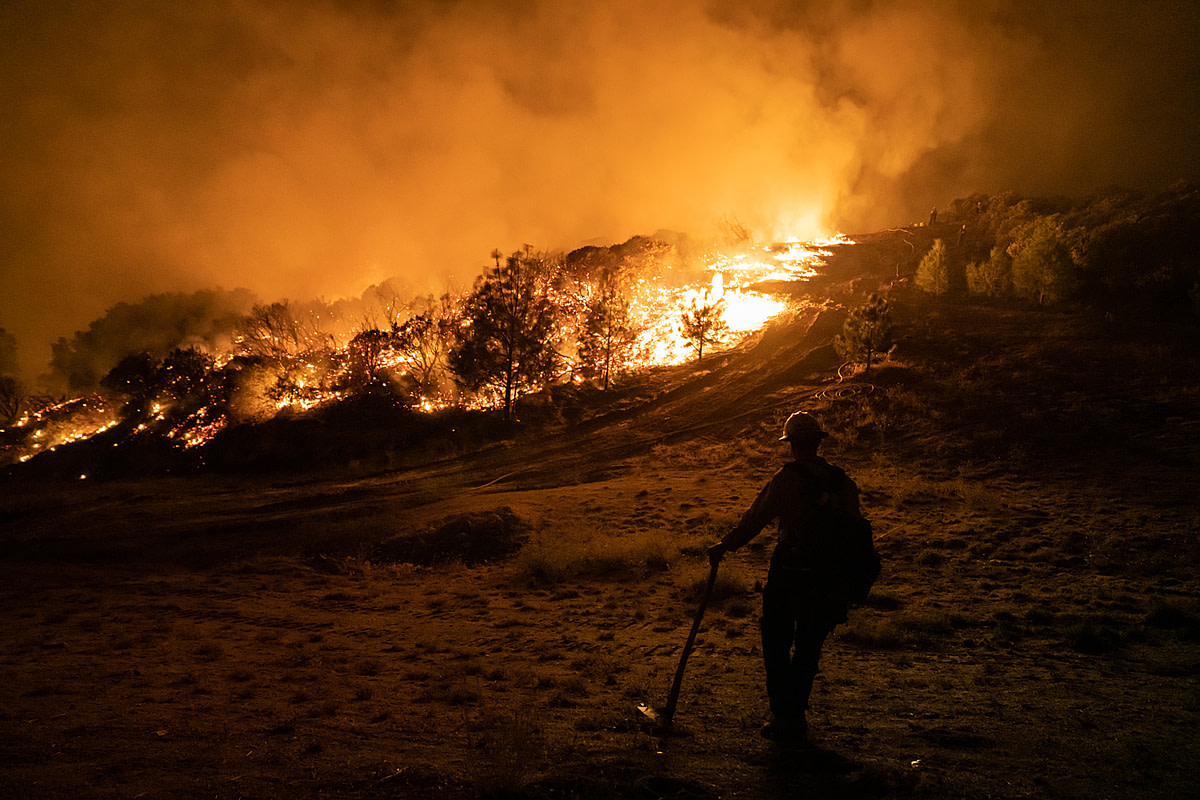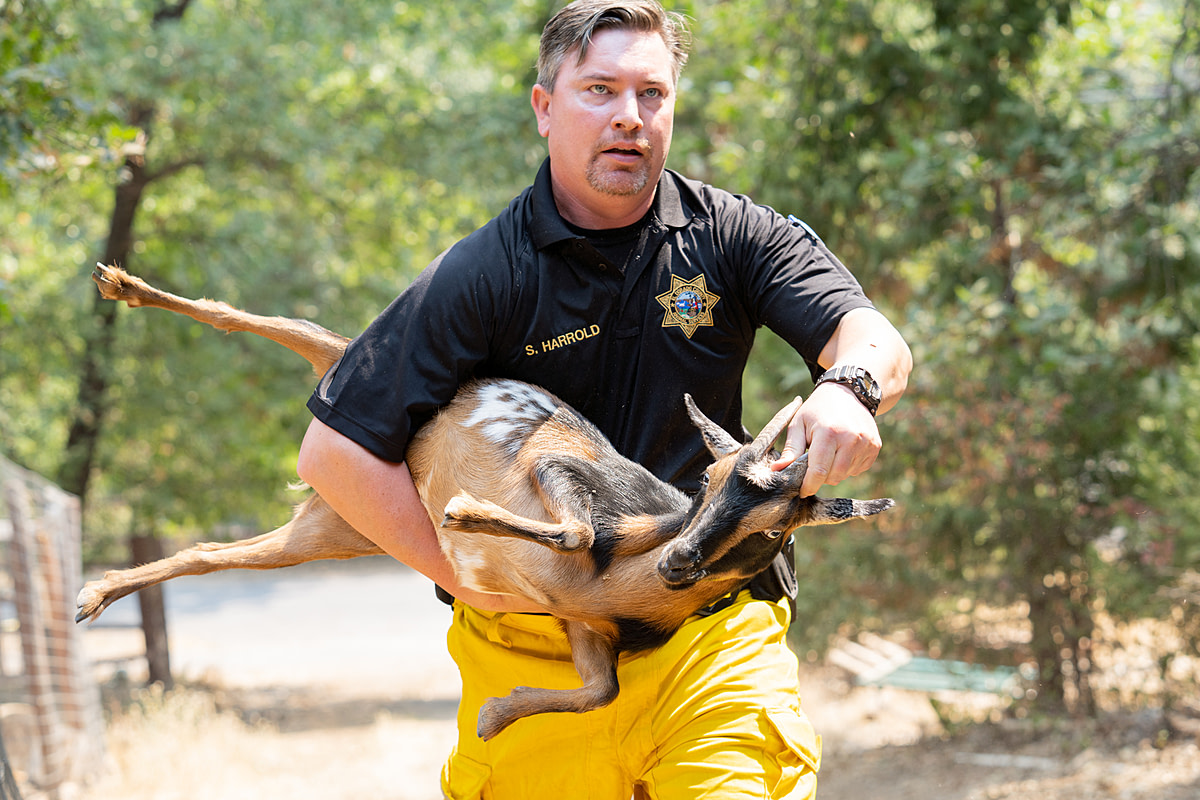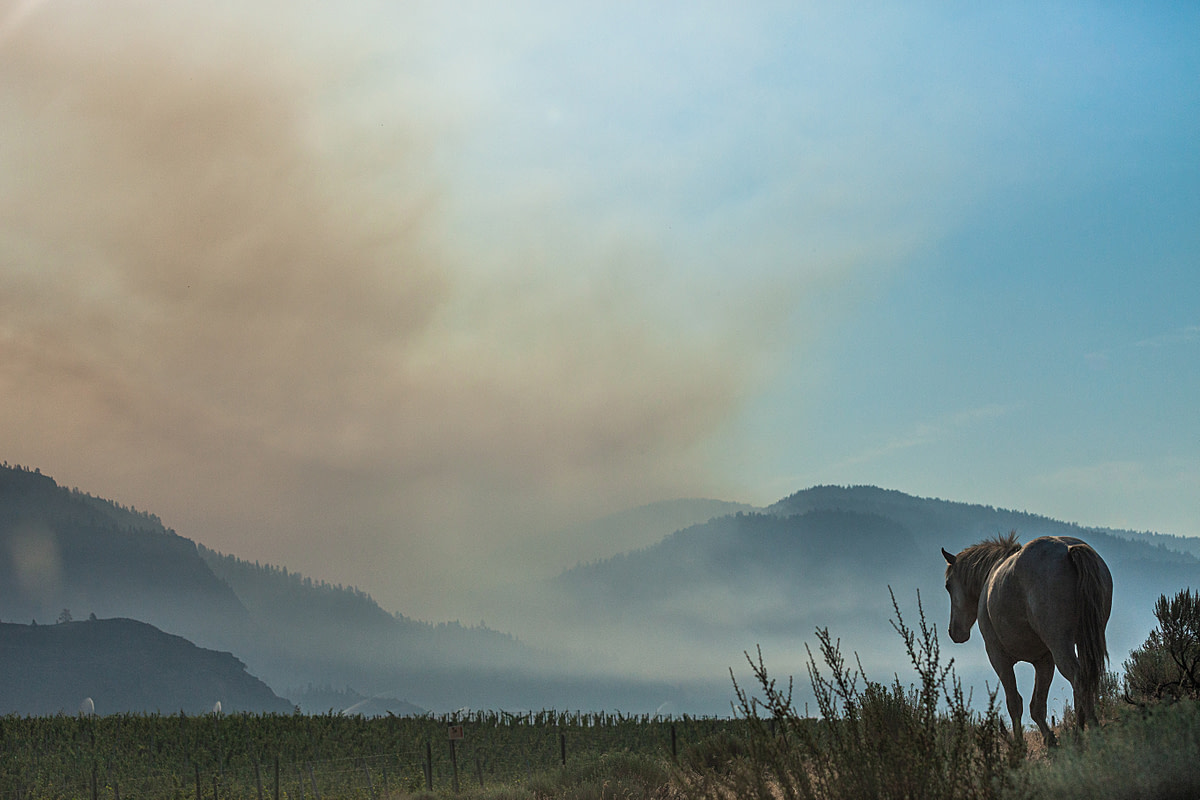Nikki Ritcher / We Animals
We Animals has photographed the impacts of wildfires on animals in California and British Columbia in the hottest summer on record. These images show animals in smoky and charred environments, rescuers toiling to save them in emergency conditions, and the dramatic efforts of firefighters and helicopters to control blazes that threaten human and animal life.
Nikki Ritcher / We Animals
We Animals photojournalist Nikki Ritcher was able to photograph a seven-person animal rescue team responding to calls from animal owners desperately trying to get animals out of the active fire zone. These seven volunteers represented four different California counties and two different local volunteer agencies. One animal control volunteer from El Dorado County, where the fire originated, was working his seventh straight day with less than two hours of sleep each night.
Nikki Ritcher / We Animals
























A “code red for humanity” is a code red for all animals.







